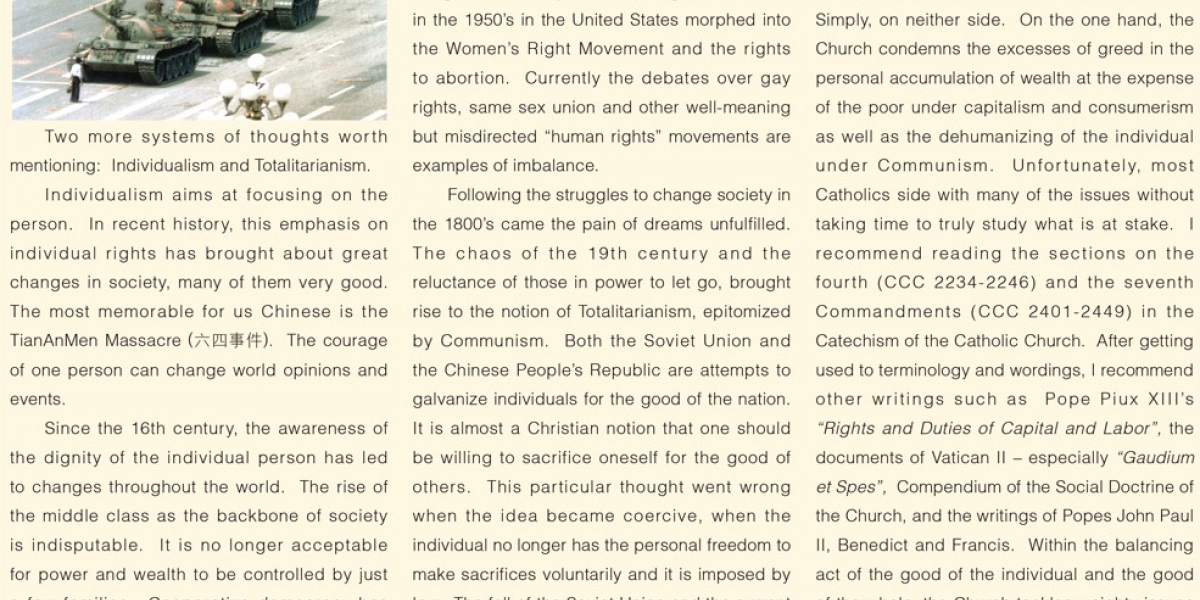昔日文章


Famous Quotations
2015.05.23
… the pull of Everest was stronger for me than any force on earth —— Tenzing Norgay
… the pull of Everest was stronger for me than any force on earth —— Tenzing Norgay
「……對我來說,額菲爾士峰的吸引力比地球上任何力量都更加強大」——丹增.諾蓋
About a month ago, Nepal(尼泊爾)was hit by a powerful earthquake and thousands of people died. A lot of mountaineers were trapped on Mount Everest by avalanches following the earthquake. Mount Everest is the world’s highest peak. It is part of the Himalayas(喜馬拉雅山脈)and its peak is on the border of Nepal and China. Mount Everest is known in Nepal as Sagarmȃthȃ (天空之頭)and in Tibet(西藏)as Chomolungma(珠穆朗瑪峰或聖母峰). Its English name was given in honour of Sir George Everest, a Welsh(威爾斯)surveyor and geographer.
Mount Everest has attracted numerous adventurous mountaineers over the past century. Can you think of the dangers which the mountaineers face on Everest? To name a few, the dangers may include altitude sickness, lack of oxygen, frostbite and snow blindness. In fact few of the mountaineers can go on the expeditions without the help of the Sherpas(雪巴人), who serve as guides or porters. Most Sherpas live in the eastern regions of Nepal. They are well-known for their bravery, expertise and stamina at very high altitudes. One of the most famous Sherpas is Tenzing Norgay(1914-1986).
Born in Nepal, Norgay was one of 13 children in the family, but most of them died young. When Norgay was a teenager, he moved to India(印度)to work as a trekking porter. At the age of 19, he was employed as a porter by a British expedition to Mount Everest. Over the next twenty years, he took part in a number of unsuccessful attempts to climb the mountain. In 1953, Norgay and Sir Edmund Hillary, a New Zealand(新西蘭)mountaineer, made the first successful ascent on Mount Everest. After that, Norgay became director of the Himalayan Mountaineering Institute(喜馬拉雅登山協會)in India to promote mountaineering as a sport.
He was named by Time(《時代》)magazine as one of the 100 most influential people of the 20th century.
Glossary
Avalanches 雪崩
Surveyor 測量員
Altitude sickness 高山症
Frostbite 凍瘡
Expeditions 探險隊
Stamina 耐力
Trekking porter 艱辛旅途上的挑夫
Ascent 攀登


Neither East Nor West
2015.05.09
Marian Devotions
Being in the month of May, it would be remiss on my part if I do not set aside an article (or two) just on the devotion to the Blessed Mother.
Obviously we must begin with Our Lady of China.
The Blessed Mother appeared at DongLu( 東閭)in Hebei( 河北) in 1924 during the Boxer Rebellion ( 義和團). This particular painting was used for the mosaic now displayed in the National Shrine of the Immaculate Conception in Washington, D.C. We pray that Mary will keep us faithful during our present time of struggle with religious freedom in Mainland China.
Our Lady of Perpetual Help
This devotion began in the Byzantine Rite Catholic Church in the 15th century. The art form is called icon, or image. This is a particular art form of the region associated with Greece, Turkey and the countries around Russia. Eastern Rite Roman Catholics and the various Orthodox churches( 東正教)believe icons to be sacred in the sense that praying and meditation in the presence of icons brings a deeper communion with Jesus and the saints.
Scapular(聖母聖衣)
Brown scapular – Our Lady of Mount Carmel promoted by St. Simon Stock ; Green scapular – Immaculate Heart of Mary.
There are a dozen different scapulars of various colors associated with different emphasis of devotion to the Blessed Mother.
Miraculous Medal(顯靈聖牌)
Immaculate Conception promoted by Saint Catherine Labouré.
The prayer associated with this devotion goes like this:
"O Mary, conceived without sin, pray for us who have recourse to thee."
This is recommended especially to those facing death that the Blessed Mother awaits us to make our final journey to her Son. It is so comforting to know that we never face death alone.
Four Way Medal
Sacred Heart medal, St. Joseph medal, St. Christopher medal, and the Miraculous medal combined into one. I have worn one since my Baptism.
Other already well known devotions and apparitions of Mary.
Our Lady of Lourdes( 露德聖母), Lourdes, France ; Our Lady of Fatima(花地瑪聖母), Fatima, Portugal ; Our Lady of Guadalupe(瓜達盧佩聖母), Mexico City, Mexico.
Nativity scene & Stations of the Cross
These two are particularly familiar to us. Nevertheless, they came with a rich history. In the beginning, Christians used to make pilgrimage to the Holy Land to “walk in the footsteps of Jesus.” But, with the rise of Islam in the 8th century, Muslims controlled the Holy Land. Their spread and subsequent invasion into Portugal and Spain caused the Christians and Muslims to become enemies to each other. The Holy Land was unreachable. (Even before that, most Christians could not travel that far to make the pilgrimage anyway.) It was St. Francis who introduced the idea to bring Jesus to the churches by promoting the Nativity Scene for Christmas and the Stations of the Cross for Lent. Not surprisingly, both have a strong focus on Mary. Both devotions even have dramatic plays to help with our prayers. Even non-Catholics put on Christmas programs and Passion Plays to express their love of the Lord.
The Stations seem to focus on Jesus. But the hymn chanted at the end of each station of the Cross, entitled Stabat Mater Dolorosa (Stood the Sorrowful Mother) focuses on the Blessed Mother following her Son’s Passion, Death and Burial. What beautiful imagery for the seasons!
These are all wonderful devotions. It is important to remember that they should always bring us closer to Jesus in the Holy Eucharist and in the Bible.
Mary with her loving Son, bless us each and every one!


Famous Quotations
2015.05.02
"Number rules the universe." —— Pythagoras 數字統治宇宙。——畢達哥拉斯
You may not have heard of Pythagoras, an ancient Greek(希臘)mathematician and philosopher. However, you may have learned the following Pythagorean Theorem(畢氏定理)in geometry: a2 + b2 = c2. The theorem states that in a right-angled triangle, the area of the square on the hypotenuse is equal to the sum of the areas of the squares on the other two sides.
This theorem had already been found by Babylonians(巴比倫人), but it was given Pythagoras’ name because he is often said to have proved the theorem was true for all right-angled triangles.
There are very few reliable written records about the life of Pythagoras. He is thought to have been born in about 570 BC(more than 2,500 years ago)on the Greek island of Samos(薩摩斯島).
When he was young, he travelled to Egypt and other places to pursue knowledge of mathematics and new ideas. Later he set up a religious group known as the Pythagoreans(畢達哥拉斯學派). The members believed in the power of numbers and that everything in the universe could be explained by numbers. They followed strict rules such as never eating meat and beans.
Pythagoras also believed that music was related to mathematics. The legend goes that when Pythagoras was walking past a blacksmith’s one day, he heard different sounds made when the hammers struck different sized anvils. He discovered that there was a connection between music and mathematics.
There have been different stories about Pythagoras’ death. It is thought that Pythagoras fled from an uprising against the Pythagoreans in about 500 BC and was killed or starved himself to death.
Geometry 幾何學
Right-angled triangle 直角三角形
Hypotenuse 斜邊
Written records 文字記錄
Strict rules 嚴格規條
Blacksmith 鐵匠
Anvils 鐵砧
Uprising 暴動


Neither East Nor West
2013.11.03
Individualism(個人主義)﹠ Totalitarianism(極權主義)
Two more systems of thoughts worth mentioning: Individualism and Totalitarianism.
Individualism aims at focusing on the person. In recent history, this emphasis on individual rights has brought about great changes in society, many of them very good. The most memorable for us Chinese is the TianAnMen Massacre (六四事件). The courage of one person can change world opinions and events.
Since the 16th century, the awareness of the dignity of the individual person has led to changes throughout the world. The rise of the middle class as the backbone of society is indisputable. It is no longer acceptable for power and wealth to be controlled by just a few families. Cooperative democracy has been the moving force everywhere throughout the world for the last two hundred years. This is particularly evident in both the American and the French Revolutions. It has brought about great moments of heroism and beauty of personal virtue.
This ideology came to an abrupt end in the 1960’s when personhood became lopsided. Personal rights rose above the consideration for the good of society. The Civil Rights Movement in the 1950’s in the United States morphed into the Women’s Right Movement and the rights to abortion. Currently the debates over gay rights, same sex union and other well-meaning but misdirected “human rights” movements are examples of imbalance.
Following the struggles to change society in the 1800’s came the pain of dreams unfulfilled. The chaos of the 19th century and the reluctance of those in power to let go, brought rise to the notion of Totalitarianism, epitomized by Communism. Both the Soviet Union and the Chinese People’s Republic are attempts to galvanize individuals for the good of the nation. It is almost a Christian notion that one should be willing to sacrifice oneself for the good of others. This particular thought went wrong when the idea became coercive, when the individual no longer has the personal freedom to make sacrifices voluntarily and it is imposed by law. The fall of the Soviet Union and the current experimentations in the economics of China show how Totalitarianism fails. As a philosophy, it stifles individual dignity and the enthusiasm for self improvement. Yet, whenever there is an unreasonable imbalance of wealth, the same ideas rise up again to justify government central power, all in the name of helping the poor. This is partly the struggle currently in the United States over universal health care.
Where does the Church stand on this? Simply, on neither side. On the one hand, the Church condemns the excesses of greed in the personal accumulation of wealth at the expense of the poor under capitalism and consumerism as well as the dehumanizing of the individual under Communism. Unfortunately, most Catholics side with many of the issues without taking time to truly study what is at stake. I recommend reading the sections on the fourth (CCC 2234-2246) and the seventh Commandments (CCC 2401-2449) in the Catechism of the Catholic Church. After getting used to terminology and wordings, I recommend other wr i t ings such as Pope Piux XI I I ’s “Rights and Duties of Capital and Labor”, the documents of Vatican II – especially “Gaudium et Spes”, Compendium of the Social Doctrine of the Church, and the writings of Popes John Paul II, Benedict and Francis. Within the balancing act of the good of the individual and the good of the whole, the Church tackles weighty issues like just wage, right to work, ecology, human trafficking, economic slavery, and so on.
Happy reading.


